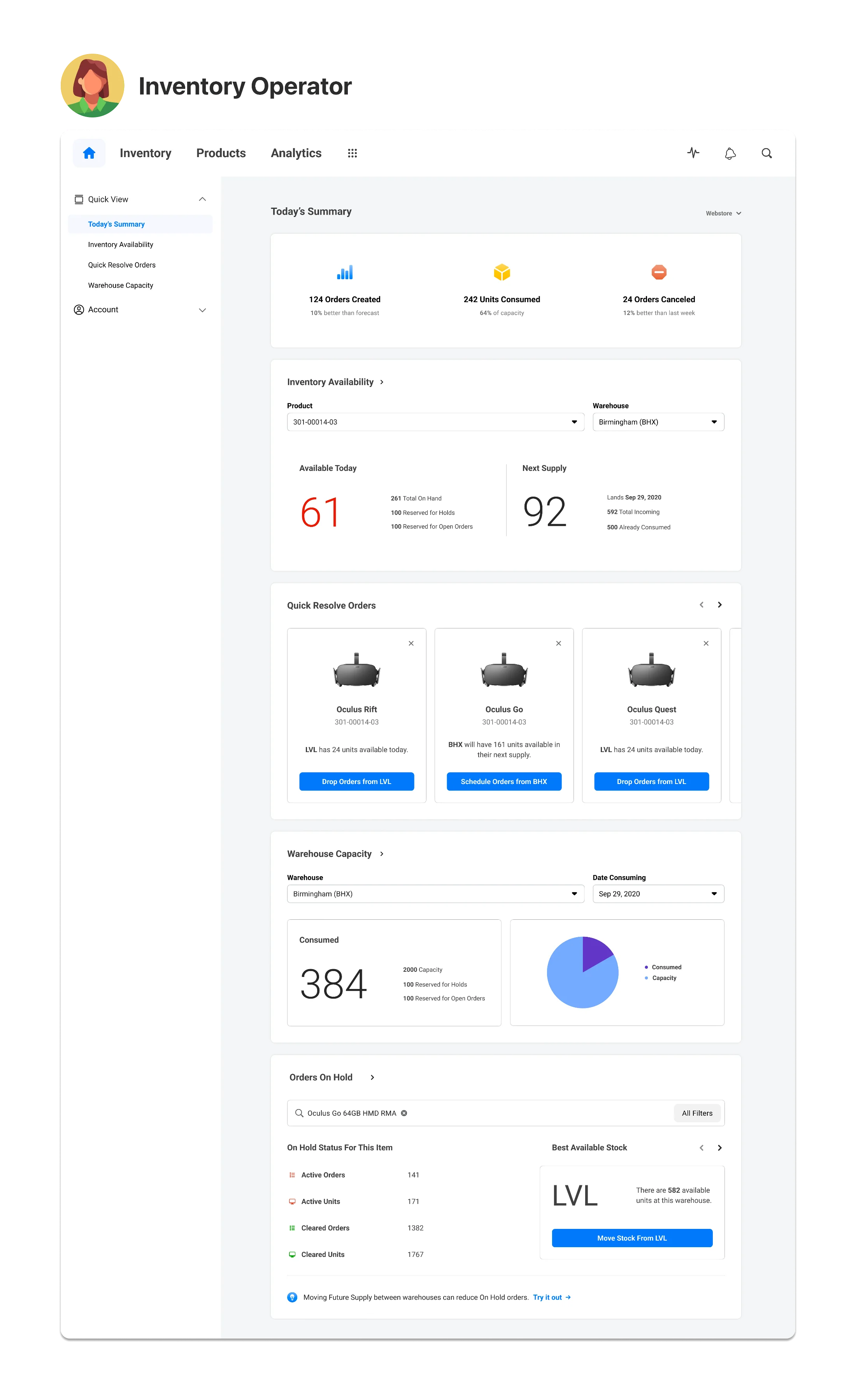Facebook AR/VR Commerce
Inventory and Order Management Platform
UX, Enterprise, B2B, Web Application
Inventory and Order Management Platform is a critical enterprise tool that supports the fulfillment of hardware retail, but unfortunately, it has been neglected. Recognizing the potential impact of a more efficient system, I took the initiative to champion a design effort with my design team and create a new platform. The aim was to unify Store tools through an optimized, automation-driven, and consumer-grade user experience that will revolutionize the way things are done. With this new platform, not only will end-users save valuable time, but it will also connect critical data across each system, resulting in a more streamlined and effective approach.
User Needs
When I joined Facebook, the Inventory and Management for AR/VR Commerce used many home-grown tools that were quickly hacked together by engineering. There were no user experience and also no consistency between tools. I quickly realized the issue and the PM Lead agreed because we had heard many internal complaints about the lack of efficient toolings to support our internal customers. However, there were no movement in terms of fixing these tools because there were too many internal teams building their own tools to suit their way they operated.
The demand for enhanced tooling was undeniably pressing, yet the complexity extended beyond mere software improvements. Data management and synchronization emerged as formidable hurdles, particularly as users grappled with the arduous task of manually inputting and reconciling data across multiple platforms to monitor inventory across disparate warehouses scattered across various geographical locations. This manual and repetitive data entry process not only proved time-consuming but also exponentially increased the likelihood of errors creeping into the system. Without an automated mechanism in place, the margin for inadvertent data inaccuracies remained alarmingly high, posing a significant risk to the integrity and reliability of the inventory management system.The absence of seamless data synchronization compounded the challenge, exacerbating the inefficiencies and operational bottlenecks faced by users. This disjointed approach not only hindered productivity but also undermined the overall effectiveness of inventory monitoring efforts.
Addressing these issues necessitated a comprehensive overhaul of the existing data management infrastructure, coupled with the implementation of robust synchronization protocols. By streamlining data entry processes and implementing automated mechanisms for data synchronization, users could not only mitigate the risk of erroneous data entry but also significantly enhance the accuracy and reliability of inventory monitoring across diverse geographical locations.
Design Approach
Throughout this project, my design team and I developed a platform strategy aimed at establishing a robust framework for AR/VR Stores Tools. This strategy not only laid down a solid foundation but also offered the flexibility necessary for user and team customization, catering to their unique requirements.Central to this endeavor was the creation of a system in collaboration with the engineering team, facilitating seamless cross-syncing of data. This innovative approach ensured that users only needed to input data once, with it automatically propagating across all tools within the system. This integration ensured a single source of truth, guaranteeing reliable and consistent data across all functionalities.
Our Impact
At launch, three core tools were seamlessly integrated: the Inventory Monitor Tool, Catalog Manager, and Mountain Pass Vendor Data Tool. This cohesive integration enabled these tools to function harmoniously as a unified system, akin to interlocking LEGO pieces forming a cohesive structure. By providing familiar interactions, a uniform look-and-feel, and robust data sharing capabilities, we significantly enhanced efficiency and accuracy, simplifying the user's task execution process.
Contribution
Design leadership
Design strategy
User interviews
Work flow design
Product definition
Feature benchmarking
Feature definition
Interaction design
Visual design











